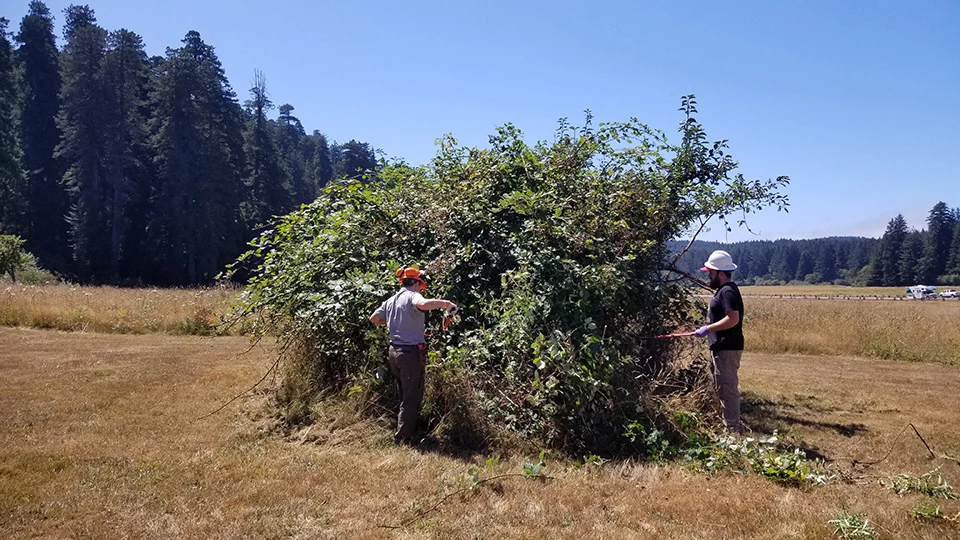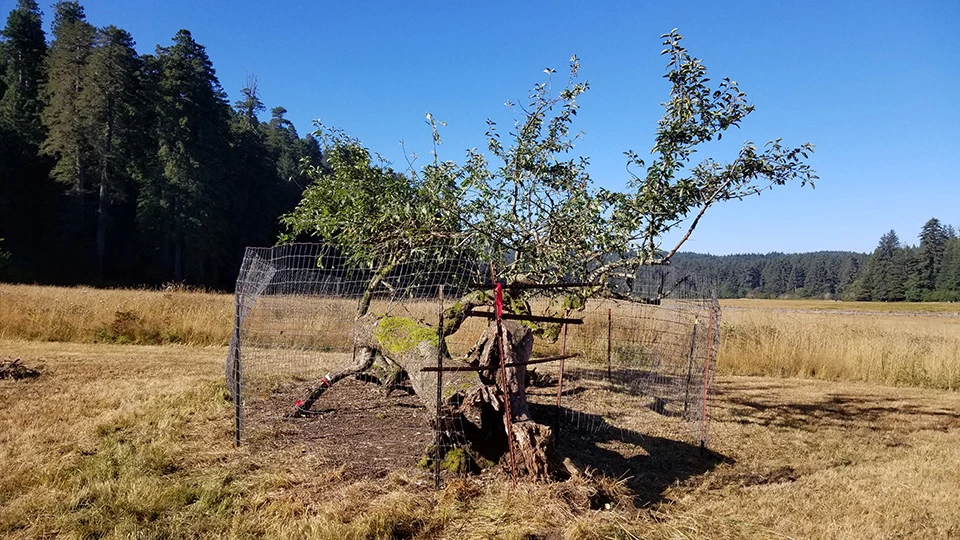Last updated: August 10, 2023
Article
Preserving Historic Orchards at Redwood National and State Parks
2019 Orchard Workshop


Left image
Invasive vines cover one of the apple trees in the orchard.
Right image
Historic apple tree after participants removed vines and damaged branches.
Credit: NPS
Why Preserve Historic Orchards?

NPS
About thirty percent of National Park Service units have some historic fruit trees or orchards, and Redwood National and State Parks are no exception. There are at least nine orchards within the parks, and many individual fruit trees scattered throughout. Several interesting varieties of fruits exist in the largest two orchards in Redwood National and State Parks: Lyons Ranches Home Place Orchard in the Bald Hills, and the Boyes Prairie Orchard in the Elk Meadow area of Prairie Creek Redwoods State Park.
Learn More about Preserving Orchards
Videos about the Historic Orchards
In these short episodes, different people share their passion and experiences with working to protect and manage historic orchards. These videos were filmed in August 2019 during a three-day training held at Boyes Prairie Orchard.
-
Historic Orchards: Wildlife Impacts
Redwood National Park's cultural landscape architect talks about how elk and bears can damage the parks' orchards.
- Duration:
- 4 minutes, 26 seconds
-
Historic Orchards: The View From The Top
The NPS Cultural Landscapes Program Manager talks about her work with historic orchard programs across the National Park Service.
- Duration:
- 2 minutes, 30 seconds
-
Historic Orchards: Why They Are Important
An NPS instructor from John Muir National Historic Site talks about why preserving orchards matters.
- Duration:
- 1 minute, 29 seconds
-
Historic Orchards: More Than History
An NPS instructor from Capitol Reef National Park talks about how historic orchards are relevant in today's society.
- Duration:
- 1 minute, 35 seconds
-
Historic Orchards: Not Just in National and State Parks
A student in the class - who is a US Forest Service employee - talks about protecting historic trees at his site.
- Duration:
- 2 minutes, 51 seconds



